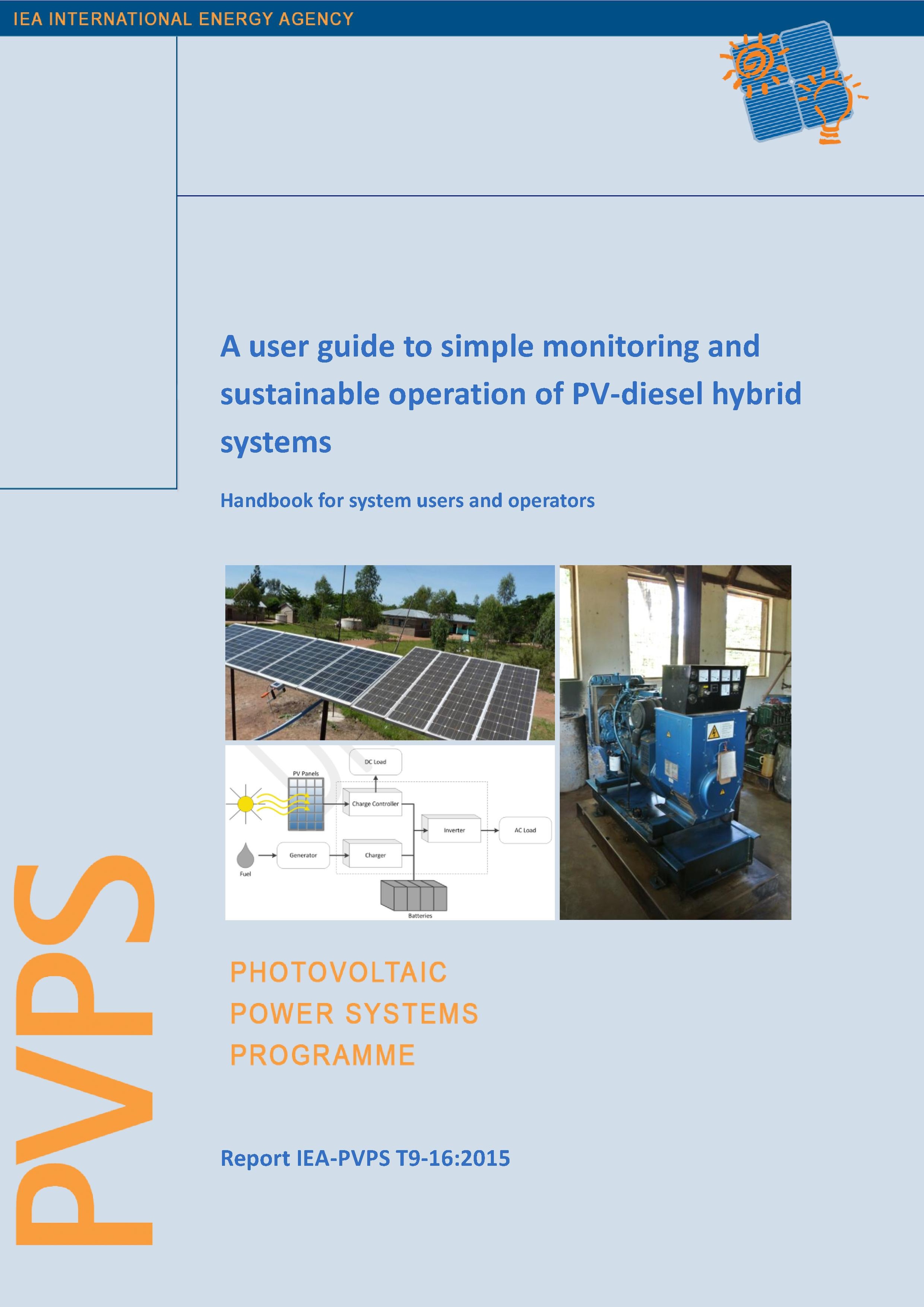Click here to register!
Difference between revisions of "Solar Hybrid Systems"
***** (***** | *****) m |
***** (***** | *****) m |
||
| (19 intermediate revisions by 8 users not shown) | |||
| Line 1: | Line 1: | ||
| − | + | [[Portal:Solar|►Back to Solar Portal]] | |
| + | = Overview<br/> = | ||
| − | + | '''Solar hybrid systems''' generate power using a solar power generator like '''[[Photovoltaic (PV)|photovoltaic (PV)]] '''[[Solar Cells and Modules|modules]] and additional renewable energy sources (e.g.,) and/or a supplementary generator. | |
| − | + | In remote rural areas, that are not connected to the national electricity [[Portal:Grid|grid]], village mini grids consisting of PV hybrid systems might be less costly than grid extension. They can replace batteries and fuel electricity generators and reach more people than single '''[[Solar Home Systems (SHS)|solar home systems (SHS)]]'''. | |
| − | + | <br/> | |
| − | <br> | + | = Function<br/> = |
| − | < | + | During the day, when the Sun is shining, the photovoltaic modules generate electricity that directly powers [[Lamps and Electric Appliances|appliances]] or can be stored in a [[Batteries|battery]] bank. At night or during days without sunshine the stored energy can be used. The supplementary generator makes the system reliable, offering the possibility of producing power at any time. Therefore, solar hybrid systems can offer '''alternating current (AC)''' power for 24 hours a day. |
| + | <div><span>The [http://www.nrel.gov/homer/ HOMER tool], developed by the U.S. '''National Renewable Energy Laboratory (NREL)''', is useful for designing and modeling hybrid systems. The HOMER tool automatically retrieves solar insolation information from NASA.</span> | ||
| − | |||
| + | = PV-Diesel Hybrid Mini-Grid = | ||
| + | |||
| + | *<span>GIZ experiences in Senegal: [[PV-Diesel Hybrid Mini-Grid|PV-Diesel Hybrid Mini-Grid]].</span> | ||
| + | *<span>ESMAP by Worldbank: [http://www.esmap.org/esmap/sites/esmap.org/files/TR_11107_Peru_Solar-diesel Hybrid Options for the Peruvian Amazon]</span> | ||
| + | |||
| + | <br/> | ||
| + | |||
| + | = Monitoring of PV-diesel Hybrid Systems = | ||
| + | [[File:A User Guide to Simple Monitoring and Sustainable Operation of PV-diesel Hybrid Systems.pdf|border|right|A User Guide to Simple Monitoring and Sustainable Operation of PV-diesel Hybrid System]] This [[:File:A_User_Guide_to_Simple_Monitoring_and_Sustainable_Operation_of_PV-diesel_Hybrid_Systems.pdf|publication]] from IEA PVPS Task 9 includes monitoring and evaluation guidelines for PV-diesel hybrid systems. It will provide guidelines to users on how they can use the system to last it for a long time and what to do in case of system failures. The application of the guide requires little technical equipment, but daily manual measurements. For the most part, it can be managed by pen and paper, by people with no earlier experience of power systems. | ||
| + | |||
| + | |||
| + | = Further Information = | ||
| + | |||
| + | *[[Solar Hybrid Systems: Costs, Financing, Business and Operation Models|Financing solar home system]]<br/> | ||
| + | *[[Solar Hybrid Systems - Operator Models|Operator models for solar hybrid systems]]<br/> | ||
| + | *[[Portal:Solar|Solar portal on energypedia]]<br/> | ||
| + | |||
| + | = References = | ||
| + | |||
| + | <references /> | ||
| + | |||
| + | [[Category:Grid]] | ||
| + | [[Category:Hybrid_Systems]] | ||
[[Category:Solar]] | [[Category:Solar]] | ||
Latest revision as of 09:38, 1 August 2018
Overview
Solar hybrid systems generate power using a solar power generator like photovoltaic (PV) modules and additional renewable energy sources (e.g.,) and/or a supplementary generator.
In remote rural areas, that are not connected to the national electricity grid, village mini grids consisting of PV hybrid systems might be less costly than grid extension. They can replace batteries and fuel electricity generators and reach more people than single solar home systems (SHS).
Function
During the day, when the Sun is shining, the photovoltaic modules generate electricity that directly powers appliances or can be stored in a battery bank. At night or during days without sunshine the stored energy can be used. The supplementary generator makes the system reliable, offering the possibility of producing power at any time. Therefore, solar hybrid systems can offer alternating current (AC) power for 24 hours a day.
PV-Diesel Hybrid Mini-Grid
- GIZ experiences in Senegal: PV-Diesel Hybrid Mini-Grid.
- ESMAP by Worldbank: Hybrid Options for the Peruvian Amazon
Monitoring of PV-diesel Hybrid Systems
This publication from IEA PVPS Task 9 includes monitoring and evaluation guidelines for PV-diesel hybrid systems. It will provide guidelines to users on how they can use the system to last it for a long time and what to do in case of system failures. The application of the guide requires little technical equipment, but daily manual measurements. For the most part, it can be managed by pen and paper, by people with no earlier experience of power systems.




















